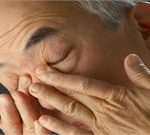(HealthDay News) — It is important to remember that apple cider vinegar is not a magic cure-all. But it does have some health benefits, says the University of Chicago Medicine. The school says the product may: Help control blood sugar. Decrease levels of salmonella in food. Moderately boost the ability to lose weight. But the school says apple cider vinegar won’t: Control high blood pressure. Prevent or cure cancer.
A little about: Weekly Gravy
All Sauce from Weekly Gravy:
Good News for People with Persistent Anxiety

A diagnosis of generalized anxiety disorder need not be a life sentence, a large Canadian study suggests. “It’s so exciting,” said lead author Esme Fuller-Thomson, director of the Institute for Life Course and Aging at the University of Toronto. People with generalized anxiety disorder worry excessively for long periods, and most days they struggle to control their discomfort, according to the Anxiety and Depression Association of America. Anxiety affects an estimated 31% of U.S. adults, is almost twice as common in women than men, and often goes hand-in-hand with major depression. Fuller-Thomson’s team combed data from a 2012 Canadian mental health survey of just over 21,000 people in search of factors associated with “complete mental health.” Of those surveyed, about 2,100 had generalized anxiety disorders. Researchers defined complete mental health as being free of current mental illness, being able to function well and feeling good about oneself, relationships and community connections. Of those with a history of anxiety, 72% were in remission; 58% were free of all mental illness for the past year; and 40% met the criteria for complete mental health. Among the larger group of respondents who had never had a generalized anxiety disorder, 76% were said to have complete mental health. “I didn’t expect the numbers to be so high,” Fuller-Thomson said. “It did surprise me.” The study did not look at… read on >
‘Burnout’ Could Raise Your Odds for A-fib

Feeling exhausted, with too few hours in the day to do what needs to be done? Be careful of burnout — especially after a new study finds it can raise your risk for the dangerous irregular heartbeat known as atrial fibrillation. “A-fib” — long tied to higher odds for heart attack and stroke — is the most common form of heart arrhythmia. It’s estimated that 10 million people in the United States will have the condition by next year. The new study found burnout might help trigger a-fib. “Vital exhaustion is associated with increased inflammation and heightened activation of the body’s physiologic stress response,” explained study author Parveen Garg, of the University of Southern California, Los Angeles. “When these two things are chronically triggered, that can have serious and damaging effects on the heart tissue, which could then eventually lead to the development of this arrhythmia,” he explained. In the study, Garg’s group surveyed more than 11,000 people about whether or not they had symptoms of burnout and then followed them for nearly 25 years. Burnout “is typically caused by prolonged and profound stress at work or home,” said Garg. His team published its findings Jan. 13 in the European Journal of Preventive Cardiology. Burnout “differs from depression, which is characterized by low mood, guilt and poor self-esteem,” Garg said in a journal news release.… read on >
More Studies Link Vaping to Asthma, COPD

Lung illnesses and deaths from vaping have been grabbing headlines for months, and now two new studies offer fresh evidence pointing to long-term respiratory concerns. The studies link the use of electronic cigarettes to asthma and chronic obstructive pulmonary disease (COPD). “These studies add to the body of evidence on the relationship between electronic cigarette use and lung conditions,” said Dr. Albert Osei, a postdoctoral fellow at Johns Hopkins University School of Medicine in Baltimore. He’s lead author of a study published earlier this month in the American Journal of Preventive Medicine. The studies cannot definitely prove a cause-and-effect link, he noted, adding: “We believe this warrants further longitudinal studies.” Introduced to the U.S. market more than a decade ago, e-cigarettes are marketed as less harmful than traditional tobacco cigarettes, and as a way to help quit smoking. In 2016, almost 11 million American adults used e-cigarettes. Most have a vaporization chamber, a nicotine cartridge that can include flavoring and a rechargeable battery. The vapor they produce is inhaled into the lungs — a process called vaping. Past studies have suggested the vapor may irritate airway cells, impair their ability to fight infection, and lead to destruction of lung tissue. A study just published in December found that e-cigarette users are also at significantly higher risk of chronic lung diseases such as asthma, bronchitis, emphysema… read on >
Health Tip: Healthier Ways to Use Social Media
(HealthDay News) — Teens spend as many as nine hours each day on social media, says Abington Hospital in Pennsylvania. While social media is a great way to stay connected to friends and get information, it can also take a toll on mental health, the hospital says. To be a healthier social media user, it suggests: Be aware of how social media is affecting your physical and emotional wellbeing. Try using social media less frequently, perhaps once a week. Having a “Facebook Friday” or “Twitter Tuesday” may help. If you go on daily, limit the day’s usage to 15 minutes. Only check into social media when you receive a notification.
Can Pot Bring on Psychosis in Young Users? It May Be Happening, Experts Say

The idea of marijuana causing a psychotic breakdown sounds like something out of the camp film classic “Reefer Madness,” but many experts argue it’s not that far-fetched. As legalization of recreational marijuana spreads across the United States, more people are showing up in ERs with psychotic symptoms after consuming too much pot, said Dr. Itai Danovitch, chairman of psychiatry and behavioral neurosciences at Cedars-Sinai in Los Angeles. “If somebody gets too high, they use more than intended, they can have psychotic symptoms. That typically resolves as the drug wears off,” Danovitch said. “After it’s worn off, there’s no subsequent psychosis. That’s just a direct effect of over-intoxication.” But some unlucky souls with a family history of mental illness might wind up with a full-fledged psychotic disorder that will require extended treatment, Danovitch noted. “That risk is concentrated among a minority of people who have an existing vulnerability to develop a psychotic disorder, a family history of psychosis,” Danovitch said. “There are environmental factors that influence whether somebody develops schizophrenia who has a risk. It appears cannabis probably is one of those factors.” Vaping a potent form of THC — the intoxicating ingredient in pot — prompted a psychotic episode last year in 24-year-old Madison McIntosh of Scottsdale, Ariz., according to USA Today. McIntosh appeared at the driving range where he worked on his day off,… read on >
Gyms Are Fertile Ground for Germs

Going to the gym is supposed to improve your health, but it can also be a hotbed of cold and flu bugs, an expert warns. “The biggest thing about the gym is there are a lot of areas where germs, viruses and fungus can be year-round,” said Bryan Combs, a nurse practitioner in the University of Alabama at Birmingham’s School of Nursing. Handlebars on elliptical machines, treadmills, stationary bicycles and weight machines are among the dirtiest places in gyms. “Even if the handlebars are cleaned regularly, handlebars are going to be covered in bacteria,” said Combs, who added that you should clean the machines before and after each time you use them. “You need to use wipes or a disinfectant spray to wipe down the machines or weights before and after,” Combs said in a university news release. “Once you clean the equipment, hang your towel on an area that you know is clean. When you get done, clean it again for the next person.” Towels are another potential problem. “While the towels have been washed, a lot of gyms use the same container to carry dirty towels to the washing area and then use the same one to bring clean towels back, so they can become contaminated again,” Combs said. Bring your own clean towel to the gym and wash your towel after each… read on >
Many Americans Sleep More in Winter

Like the mighty grizzly bear that hibernates in winter, many people spend more time sleeping during this cold, dark season, a new survey reveals. According to the American Academy of Sleep Medicine (AASM), 34% of Americans say they sleep more in winter, compared with 10% who claim they sleep less during this time of year. In summer, these numbers are turned around, with 36% saying they sleep less and 9% saying they sleep more than usual. “The shorter days during the winter create a great, natural opportunity to spend more time sleeping,” Dr. Kelly Carden, president of the AASM, said in an academy news release. “Getting quality sleep of adequate duration can improve physical and mental health, overall performance and mitigate safety risks,” she added. Here are some tips for getting a good night’s sleep regardless of the season: Set a bedtime that allows you to get enough sleep. Avoid screens and electronics before bed. Exposure to light at night can disrupt the sleep cycle. Avoid caffeine after lunch and alcohol near bedtime — both can disrupt sleep. Relax before bed, by taking a warm bath, drinking tea, journaling or meditating. Make your bedroom comfortable. It should be cave-like — quiet, dark and a little cool. If you have sleep problems, see your doctor. More information For more on getting a good night’s sleep, head… read on >
Health Tip: Coping With Winter Nosebleeds
(HealthDay News) — Wintry climates and cold viruses can lead to frequent nosebleeds, says the National Hemophilia Foundation. To prevent nosebleeds during winter, the foundation suggests: Use a humidifier to moisturize the air. Use a nasal saline spray or water-soluble gel for your nose. If you have a cold, wipe gently. Don’t clear your nose with hard blows. Avoid vigorous activities after a nosebleed. Don’t pick your nose.
Family’s Social Standing May Be Key to Happiness for Teens

How teens see their family’s social status may play a part in their mental health and success at school, a new study suggests. Social status appears to be more important than what their parents do for a living, how much money they have or how educated they are, the researchers said. “The amount of financial resources children have access to is one of the most reliable predictors of their health and life chances,” said Candice Odgers, a professor of psychological science at the University of California, Irvine. “But these findings show that how young people see their family’s place in a hierarchical system also matters. Their perceptions of social status were an equally good, and often stronger, indicator of how well they were going to do with respect to mental health and social outcomes,” Odgers explained in a university news release. For the study, the researchers followed more than 2,200 twins born in England and Wales in 1994 and 1995. The children assessed their family’s social ranking at ages 12 and 18. By late adolescence, these beliefs were linked to how well the teen was doing, independent of the family’s income, health care, adequate nutrition and education. This pattern was not seen at age 12. The researchers also found that the twins’ views were not always the same. At 18, the twin who said the… read on >









